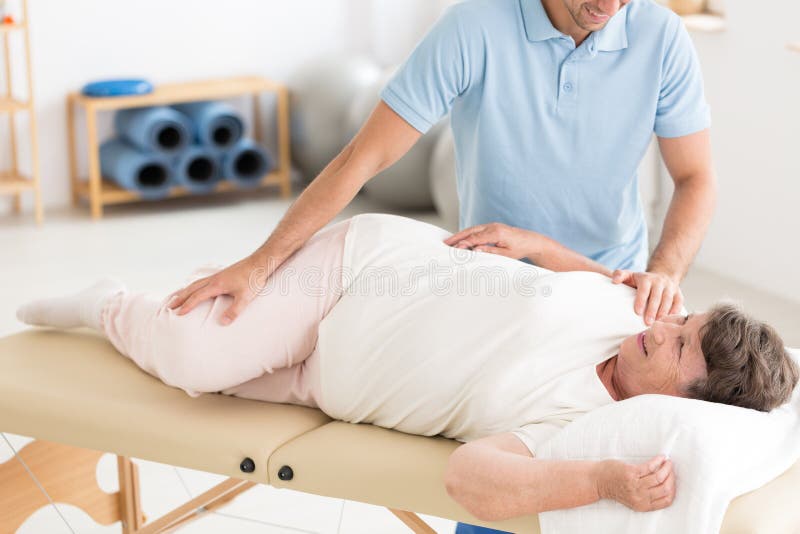CHIROPRACTIC THERAPY IS RECOMMENDED BY DOCTORS

Through their chiropractic care, chiropractors help patients to restore their health and well-being. chiropractor in Plano Texas who receive chiropractic treatment will feel better in a short time. One of the things chiropractors do to make patients feel better include strategies to reduce stress as well as sound nutrition recommendations. Chiropractic care should also include lifestyle changes, such as eating habits and recommendations. The quality of the service offered by a chiropractor and the speed at which patients recover will reveal their expertise in treating patients. The Activator method, for instance has been the subject of clinical trials to demonstrate its effectiveness. Chiropractic doctors recommend chiropractors who employ techniques that are low-force.
Spinal manipulation
Chiropractic therapy involves manipulating your spine. This is a technique that doctors frequently recommend. Doctors can complain to chiropractors that they're "hanging on too long" and "not doing enough" to alleviate discomfort. Chiropractic Therapists conduct a physical exam to determine if a back problem is causing restricted mobility or if the bones of the spine are not aligned properly. If a condition is severe enough, a doctor might suggest spinal injections in order to relieve the pressure on the nerve root.
Chiropractic manipulation can correct vertebrae that are not aligned using various methods. They are usually done by hand and involve applying pressure to specific joints to restore them to their normal alignment and motion. Other techniques include electrostimulation, joint mobilization and Ischemia compression. Physicians may prescribe self-care exercises and self-treatment tips. Many studies have shown that spinal manipulation is safe. Patients may experience some soreness at the manipulation site and mild exhaustion.
Method of activation
The Activator Method The Activator Method, a two-part method for chiropractic therapy employs gentle impulses to help nudge subluxations along the spine. It relieves pressure from the spinal nerves and strains the muscles of the spine with its gentle impulses. It releases 0.3 J of kinetic energy per three-millisecond pulse. Activator techniques are faster and easier than manual adjustments that do not cause injuries.
The Activator is a well-researched technique that can be used to treat a range of health conditions. It is particularly effective in treating TMJ, herniated disks, neck pain neurologic conditions, and TMJ. It has no adverse effects and is safe for people of all stages of life. However, people with a low bone density or osteoporosis must consult a doctor before seeking this treatment.
Low-force, high-amplitude movement
Chiropractic adjustments are done using a low-amplitude, high-velocity approach. This involves short thrusts that go over restricted joints using quick thrusts. Although this method is typically effective for people with recent trauma, children, and those who are new to chiropractic therapy however, it is less likely to result in accidental injuries. Additionally, doctors suggest the use of this method when treating patients who are anxious or sensitive to pressure.
The use of a low-force, high-amplitude motion is also essential to ensure the effectiveness of spinal manipulation. This kind of adjustment is advised by doctors to patients with back problems. It is easy and allows one to regain range of motion. Many chiropractors use a combination of low and high-amplitude techniques, including flexion-distraction and Cox/flexion-distraction. Cox/flexion-distraction, which combines osteopathic principles with chiropractic methods, uses special tables with moving parts. The Nimmo Receptor Tonus technique uses the compression of ischemic nerves to perform spinal manipulation. Other techniques include the Cranial technique, which is focused on the cranial bone, and Biophysics which employs inverse rotations during spinal manipulation.
Pain relief
Chiropractic therapy is a natural method of pain relief that focuses on the body as a whole. It treats the root cause of pain by addressing its root cause. Whatever the cause, whether it's an accident or injury, nerve damage is the main reason for all pain. With gentle manipulation of the spine and joints chiropractors can help ease pain naturally, without the use of drugs or surgery. Many military facilities also offer chiropractic care.
Although chiropractors specialize in spinal manipulation for back pain Their services also include stretching exercises and biomechanical education. These treatments ensure that your spine and muscles are healthy by adjusting your joints and muscles. These techniques can be used by a chiropractor to avoid future back pain. If you're able stop future back pain, chiropractic treatment could be a cost-effective and beneficial alternative to conventional medical treatments. Chiropractic treatment is also more effective for chronic back pain than conventional treatments, making it a fantastic choice for a wide range of medical conditions.
Risk of stroke
Doctors haven't proven that chiropractic therapy increases the risk of stroke. The primary cause of stroke is a deficiency in blood supply to the brain. It is possible for stroke to be fatal however, those who receive chiropractic adjustments have a higher chance of recovering. Chiropractic adjustments improve blood flow and the functioning of the central nervous system. It is also linked to improved levels of enzymes and nutrition that help in blood clotting.
Although there are no definite figures on the connection between neck adjustments made by chiropractors and strokes, recent studies on the subject have revealed that it is significantly safer than many medical procedures. In reality, one stroke is reported to occur in every 48 chiropractic procedures, while only one stroke is reported for every 500,000-1 million cervical manipulations. There are other warning signs that could indicate strokes, like vertigo or unilateral facial paresthesia.